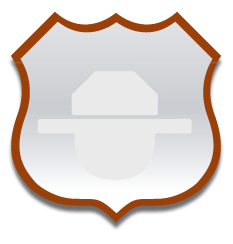LEWIS AND CLARK STATE PARK
Lewis and Clark State Park is a 621-acre camping park situated in one of the last major stands of old-growth forest in the state. Coniferous trees, streams, wetlands, dense vegetation and wet prairie comprise the park environment. The park contains a vast stand of rare old-growth forest. It is a Civilian Conservation Corps park, and many of the buildings constructed by the corps remain in use today.
Lewis and Clark State Park, which is actually separate from the Lewis and Clark Trail, began as a "public camp" for automobile tourists in 1922. Two years later, more than 10,000 people visited the park annually.
The old north spur of the Oregon Trail, which extended from the Cowlitz River landing to the city of Tumwater, passed directly through the present park site. When pioneers used this road, ramps had to be built over some of the downed logs (six to nine feet in diameter), since they had no saws capable of cutting the giants.
The park has a unique stand of old-growth forest, primarily Douglas fir and red cedar. It is one of the last old-growth forest stands remaining along Hwy. 99. Two-thirds of the old-growth trees were blown down in the 1962 Columbus Day Storm (8.5 million board feet of the original 13.5 million). The park was closed for three years to make repairs and plant trees.
Located nearby, the John R. Jackson House was the first American pioneer home built north of the Columbia River. It was constructed in 1845 by the man for whom it is named. The original house has deteriorated completely. The current log cabin was built by the Civilian Conservation Corps in the 1930s. The Jackson family has donated some original pioneer artifacts, which are on display at the cabin.
A Discover Pass is required for vehicle access to Washington state parks for day use. For more information about the Discover Pass and exemptions, please visit the
Discover Pass web page.
The park has 25 tent spaces, two restrooms and two showers. Maximum site length is 60 feet (may have limited availability). All campsites are first-come, first-served.
Group Accommodations: Two group camps are reservable by calling the park office at (360) 864-2643. Prices vary with size of the group. The camps have a 50 person capacity and include running water, tables, stoves, fire ring and vault toilets.
Check-in time is 2:30 p.m., and check-out time is 1 p.m.Quiet hours are from 10 p.m. to 6:30 a.m.Engine-driven electric generators may be operated only between the hours of 8 a.m. and 9 p.m.Length of stay: You may stay up to ten consecutive days in any one park during the summer; the stay limit is extended to 20 days between Oct. 1 and March 31.

